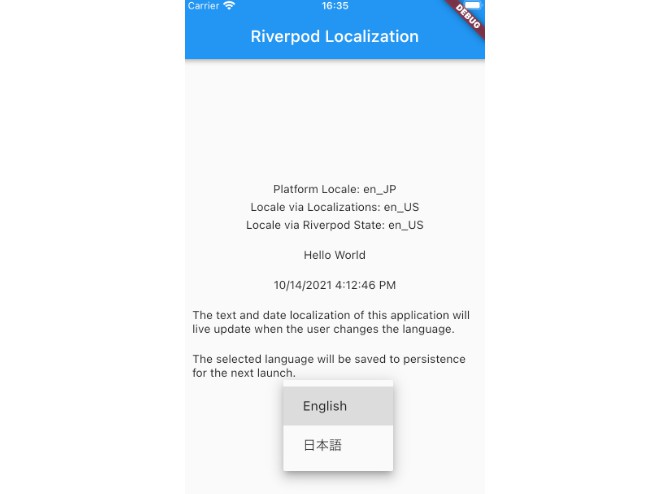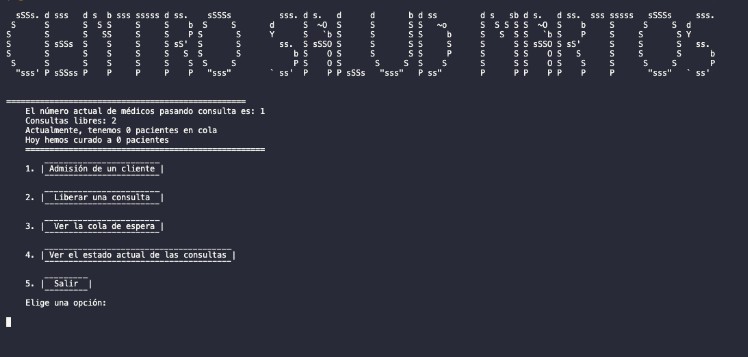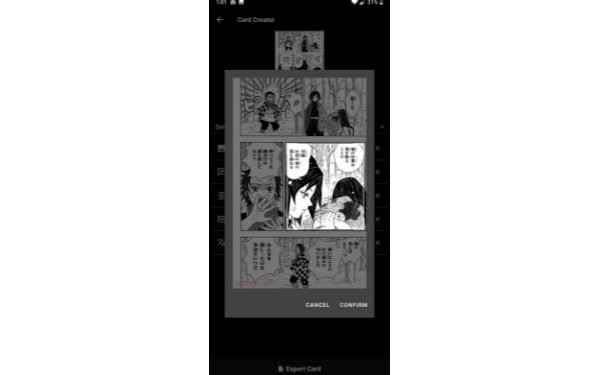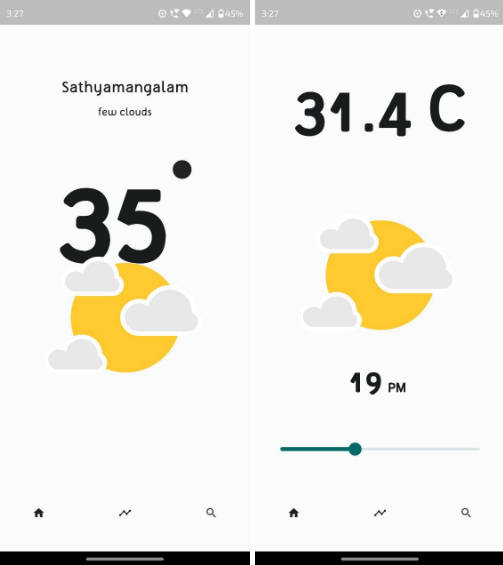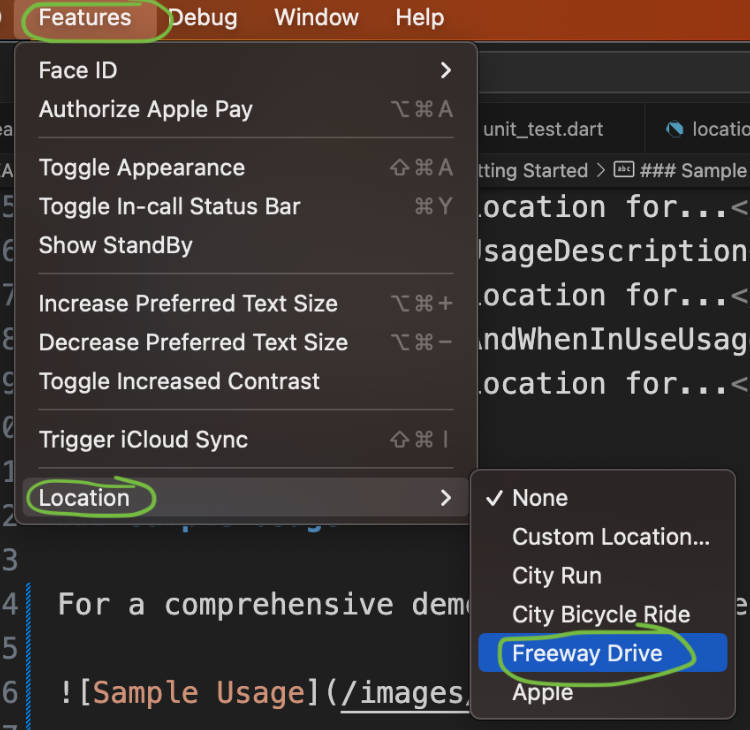Riverpod Localization
A demonstration of using Riverpod for dynamic locale switching in-app, with persistence.
How It Works
- Fallback Locale: Declared inside
locale_state.dart, and set with the @Default decorator. - Default Locale: At startup, gets the system’s Platform.localeName (via dart:io) and uses it to set the app’s locale.
- If the platform locale does not match a supported locale
- The first matching language code locale will be set.
- Otherwise, the fallback locale will be used.
- If the platform locale does not match a supported locale
- Supported Locales: These are stored in a provider, accessible from anywhere. Update this list to add more locales.
- Current Locale: Accessible from a provider anywhere the ref object is available. Watch this provider to rebuild whenever the locale changes. You can still use
Localizations.localeOf(context)to get the Locale.
Locale Changes
-
initState sets the initial locale from the platform.
- App starts up with fallback locale
- initState immediately attempts to restore a locale from persistent storage to Riverpod state.
- If there is no locale in storage, attempts to use the Platform’s locale.
-
The drop down button can be used to select a new locale.
- This updates state and saves the locale to persistent storage.
-
The
MaterialApp()is wrapped in a RiverpodConsumerWidgetwhich will rebuild automatically anytime the watchedref.watch()locale value changes. -
All translated strings are rebuilt as part of this process.
Platform Locale
The Platform.locale property of dart:io library only works on mobile. For web, we need to use dart:html‘s window.navigator.language.
This is implemented with the PlatformLocale() interface and conditional imports.
Dependencies
- State Management: Riverpod
- Immutable State: Freezed
- Notice the custom converter used for saving
LocaletoJson and fromJson. Freezed works with json_serializable naturally.
- Notice the custom converter used for saving
- Internationalization / Localization: flutter_localizations
- Persistence: shared_preferences
Getting Started
Code Generator: This app uses build_runner to generate code for freezed.
# flutter pub run build_runner build --delete-conflicting-outputs
